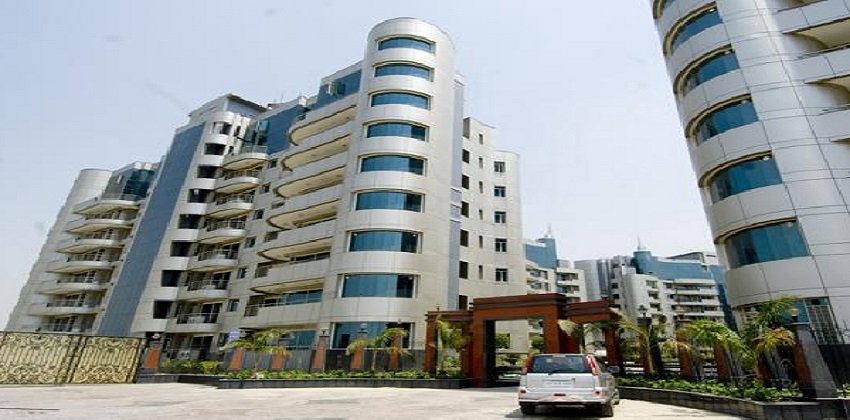Why Private Equity Still Votes for Commercial Real Estate?

Commercial segment saw a total PE inflow of nearly USD 2.8 bn in 2018, up from USD 2.20 bn in 2017
If the prolonged slowdown in the residential was not bad enough to begin with, major policy overhauls over the last five years – Demo, RERA, GST, amendments in the Benami Transactions Act etc. – literally paralysed the residential segment.
While any policy change brings with it some amount of teething pains, the residential segment took a prolonged hit because it had attracted the bulk of black money in the sector. Commercial real estate was far less affected, if at all.
Residential was also far less organized than the commercial office segment. Largely driven by IT/ITES and BFSI sectors, the commercial real estate segment has been quite transparent and predictable – the primary criteria for foreign investors’ confidence.
COMMERCIAL VS. RESIDENTIAL – NO CONTEST
Various Government-driven policies including ease of doing business in India are attracting both Indian and global companies, squarely benefiting commercial real estate. Big-bang boosters like the start-up revolution and the Make in India and Smart Cities missions have created a very lucrative environment for businesses to work and expand in India.
The demand for high-quality office spaces in India has never been higher. The residential sector, on the other hand, continues to struggle with problems that the commercial segment does not share.
Moreover, high-quality office space developers largely deal with prosperous multi-nationals who, apart from having deep pockets, have zero tolerance for opacity. They are also very exacting in their requirements, which naturally leads to the highest-possible product quality.
Residential developers are engaged in a B2C business largely defined by customers looking for the lowest possible prices. While reputed developers do ensure product quality regardless of their customers’ budget bandwidth, the bulk of Indian builders cut corners wherever possible to keep their projects affordable.
Another advantage that the commercial property sector enjoys is that office properties are primarily leased out rather than sold, which leaves far less scope for dodgy activities. The residential sector is primarily driven by sales. Compared to the lease yields for office spaces at
12-14% per annum, rental yields for housing are negligible
2.5-3.5% per annum in a best-case scenario.
The funding crunch that has crippled the residential sector has not seriously impacted the office sector. In fact, India’s first REIT listing and those to follow have opened up massive potential for increased liquidity infusions into Indian office spaces. Commercial real estate also remains largely unaffected by the dynamics that affect the residential segment, such as interest rate fluctuation, income tax breaks and even election sentiment.
While residential developers have had to curtail their supply pipeline to avoid exacerbating the already massive unsold housing inventory situation, REITS and the rapidly decreasing vacancy levels in Grade A office projects have prompted commercial real estate developers to increase their supply pipeline.
In the face of all this evidence, the commercial versus residential equation would appear to be a no-brainer. However, as in most matters related to real estate, it is not as simple as that. In many ways, it like trying to compare apples and oranges using the same yardstick.
AN INHERENTLY DIFFERENT ASSET CLASS
Commercial real estate is driven by leasing because this is a far more beneficial model for developers than selling them. High rental yields do not imply high sale value, because the demand for leased office spaces is much higher than for outright ownership of the same properties.
If a commercial space developer opts for outright sale, his top-line increases immediately. By leasing out the project instead, he can look forward to a very attractive bottom-line because of steadily increasing rental yields over the years.
Also, with REITS now a reality, developers can follow a predictable exit mechanism once the project is ready and operational, providing maximum returns on investment.
As per ANAROCK data, office rentals remained steady in 2018, with a marginal rise of 3% over the previous year. More importantly, however, the average vacancy levels reduced from 15.4% in 2016 to nearly 14.47% in
2018. Not surprisingly, vacancy was the least in Bangalore with mere 3.4% in 2018.
2019 will continue to see commercial real estate supply gain momentum on the back of vastly increased interest from PE players who are actively pumping in funds into this segment. As per ANAROCK data, the commercial segment saw a total PE inflow of nearly USD 2.8 bn in
2018, up from USD 2.20 bn in 2017. In fact, if we analyse PE trends over the last few years, the commercial segment saw total PE inflows of nearly USD 7.4 bn between 2015 and 2018. In the same period, the residential sector drew just USD 2.9 bn. This clearly reflects the interest of PE players – both global and domestic.
The major differences between commercial and residential real estate in terms of performance – and indeed as investment asset classes – are quite apparent. Certainly, private equity investors are quite certain of which segment they are more comfortable with in the current Indian market scenario.
Will residential regain its numero uno position on the Indian real estate bestseller list in the future? If it does, there is certainly a long way to go before it happens. More so, it cannot happen on the basis of end-user sales alone – it can only happen if and when investors, both individual and institutional, become sufficiently interested in the Indian housing story once again. The author is Chairman – ANAROCK Property Consultants
Source : HT


